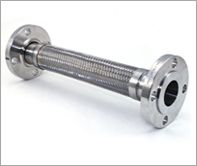The procure-to-pay cycle remains one of the most complex operational challenges facing organisations today. Traditional manual processes create significant delays, introduce human errors, and limit visibility across departments. Finance teams spend countless hours chasing approvals whilst procurement departments struggle to maintain supplier relationships through inefficient workflows.
The Hidden Cost of Manual Procurement
Procurement software solutions have emerged as the answer to these persistent challenges. These platforms address the fundamental issues that plague manual processes: lack of standardisation, poor communication between departments, and limited tracking capabilities. Without proper automation, organisations face delayed payments, strained supplier relationships, and compliance risks that can impact their bottom line.
Procurement automation tackles these problems by creating standardised workflows that guide every transaction from request to payment. The technology eliminates the paper-based processes that slow down approvals and creates audit trails that satisfy compliance requirements. Most importantly, it connects previously isolated departments through shared visibility and communication tools.
Request Management: Where Efficiency Begins
The procurement journey starts with purchase requests, where employees identify needs and submit formal requirements. Manual request processes often involve email chains, paper forms, and unclear approval hierarchies that create confusion and delays. Requesters struggle to understand policy requirements, while managers lack visibility into pending approvals.
Automated request management transforms this initial stage through structured forms that capture all necessary information upfront. The system guides users through policy requirements, suggests preferred suppliers, and automatically routes requests to appropriate approvers. This eliminates the back-and-forth communication that typically delays manual processes.
Smart request systems also incorporate spend controls that prevent policy violations before they occur. Budget checks happen automatically, ensuring requests align with available funds and organisational priorities. This proactive approach reduces rejected requests and speeds up the entire approval process.
Approval Workflows: Streamlining Decision-Making
Traditional approval processes rely heavily on email communication and manual tracking, creating bottlenecks when approvers are unavailable. These delays cascade through the entire procurement cycle, affecting supplier relationships and operational efficiency. Manual tracking also makes it difficult to identify where requests stall in the approval chain.
Automated approval workflows solve these issues through configurable routing rules that consider factors like spend thresholds, categories, and departmental policies. The system automatically escalates requests when approvers don’t respond within defined timeframes, ensuring nothing falls through the cracks. Mobile accessibility means approvers can review and approve requests regardless of their location.
The automation also provides complete visibility into approval status, allowing requesters and procurement teams to track progress in real-time. This transparency reduces the need for status update emails and helps identify process improvements. Audit trails capture every decision point, supporting compliance requirements and performance analysis.
Purchase Order Generation: From Approval to Action
Converting approved requests into purchase orders traditionally involves manual data entry, formatting, and distribution processes that introduce errors and delays. Procurement teams often spend significant time reformatting information and chasing supplier acknowledgements. These manual steps create opportunities for miscommunication and order discrepancies.
Automated purchase order generation eliminates these inefficiencies by pulling approved request data directly into standardised order formats. The system automatically populates supplier information, terms and conditions, and delivery requirements based on pre-configured templates. This consistency reduces supplier confusion and speeds up order processing.
Integration with supplier portals means purchase orders reach vendors immediately through electronic delivery. Automated acknowledgement tracking ensures suppliers confirm receipt and acceptance, whilst exception handling highlights any discrepancies that require attention. This electronic communication eliminates the delays associated with manual distribution methods.
Goods Receipt: Confirming What Arrives
Manual goods receipt processes often rely on paper-based delivery notes and email confirmations that create tracking challenges. Receiving departments struggle to match deliveries with purchase orders, leading to payment delays and inventory discrepancies. These manual processes also make it difficult to identify delivery performance issues.
Automated goods receipt streamlines this process through electronic matching that compares deliveries against purchase orders in real-time. Mobile receipt capabilities allow receiving staff to confirm deliveries using handheld devices, automatically updating system records. This immediate data capture improves inventory accuracy and speeds up the payment process.
The system also tracks delivery performance metrics, providing visibility into supplier reliability and identifying patterns that require attention. Automated alerts notify relevant stakeholders when deliveries don’t match expectations, enabling quick resolution of discrepancies. This proactive approach prevents payment delays and maintains positive supplier relationships.
Invoice Processing: The Final Mile
Traditional invoice processing involves manual data entry, approval routing, and exception handling that creates significant delays. Accounts payable teams spend hours matching invoices to purchase orders and resolving discrepancies through email communication. These manual processes increase the risk of duplicate payments and create audit challenges.
Automated invoice processing transforms this final stage through electronic invoice capture and three-way matching capabilities. The system automatically matches invoices to purchase orders and goods receipts, identifying discrepancies that require manual intervention. This automated matching reduces processing time and improves accuracy.
Optical character recognition technology extracts data from paper invoices, eliminating manual data entry requirements. Electronic invoicing integration with suppliers provides immediate invoice receipt and processing, further reducing cycle times. Automated approval routing ensures invoices reach the right approvers quickly, whilst exception handling highlights issues that need attention.
Payment Execution: Closing the Loop
Manual payment processes often involve separate systems for invoice approval and payment execution, creating additional delays and reconciliation challenges. Finance teams struggle to maintain cash flow visibility whilst ensuring compliance with payment terms. These disconnected processes also make it difficult to optimise supplier relationships through strategic payment timing.
Automated payment execution connects directly to approved invoices, eliminating the need for duplicate data entry and reducing payment delays. Integration with banking systems enables electronic payments that provide immediate confirmation and tracking capabilities. This connectivity also supports early payment discount programmes that deliver cost savings.
The automation provides complete visibility into payment status, helping finance teams manage cash flow and supplier relationships more effectively. Automated payment runs ensure consistent processing schedules, whilst exception handling identifies issues that require manual intervention. This reliability strengthens supplier relationships and reduces administrative overhead.
Integration Benefits: The Power of Connected Systems
Individual automation solutions deliver significant benefits, but their true power emerges through complete integration across the procurement cycle. Connected systems eliminate data silos that traditionally separate procurement and finance functions. This integration provides end-to-end visibility that supports better decision-making and performance management.
Integrated platforms also enable advanced analytics that reveal patterns and trends across the entire procurement process. These insights support strategic sourcing decisions, supplier performance management, and process optimisation initiatives. Real-time dashboards provide stakeholders with the information they need to make informed decisions quickly.
The connected approach also simplifies system maintenance and user training by providing a single platform for all procurement activities. This consolidation reduces IT overhead whilst improving user adoption through consistent interfaces and workflows. Data accuracy improves when information flows automatically between process steps.
Measuring Success: Key Performance Indicators
Automation success requires clear metrics that demonstrate value creation across the procurement cycle. Processing time reduction typically shows immediate improvements, with many organisations achieving 50-70% cycle time reductions. Error rates also decrease significantly when manual data entry and routing processes are eliminated.
Cost savings emerge through multiple channels, including early payment discounts, reduced processing costs, and improved supplier negotiations supported by better data. Compliance improvements become measurable through complete audit trails and automated policy enforcement. Supplier satisfaction often improves due to faster processing and more reliable communication.
User satisfaction metrics provide insight into adoption success and identify areas for additional training or process refinement. These human factors often determine long-term automation success, making them just as important as technical performance measures.
Procurement automation represents a fundamental shift from reactive manual processes to proactive systematic approaches that deliver measurable business value. The technology transforms every stage of the procure-to-pay cycle, creating efficiencies that compound throughout the entire process. Organisations that embrace this transformation position themselves for sustainable competitive advantage through reduced costs, improved compliance, and stronger supplier relationships.
Ready to transform your procurement operations? Start by evaluating your current process bottlenecks and identifying the automation opportunities that will deliver the greatest immediate impact on your organisation’s performance.
Featured Image Source: https://img.freepik.com/free-photo/businesswoman-company-office-checking-finaicial-statistics_482257-4139.jpg







